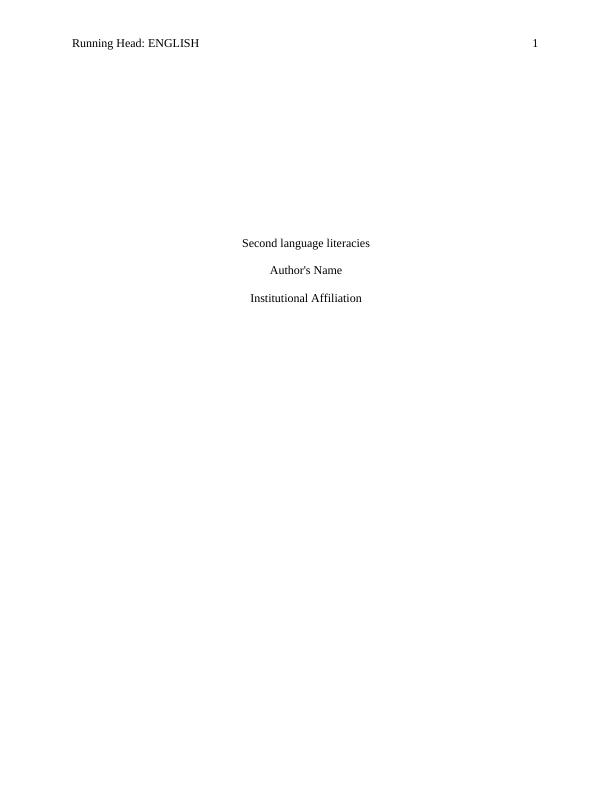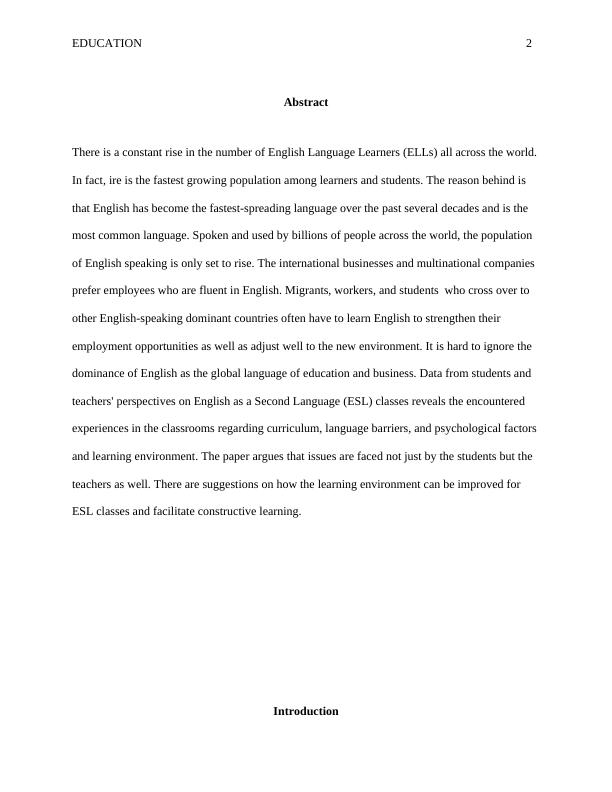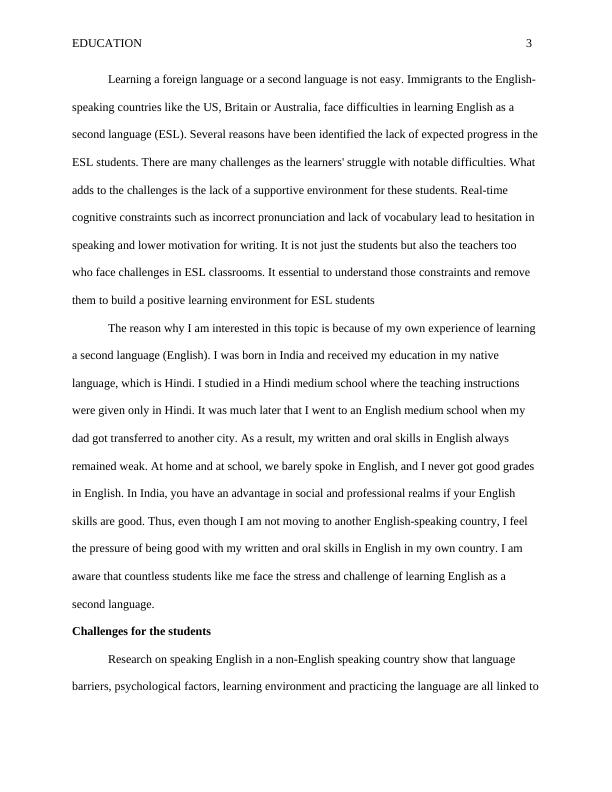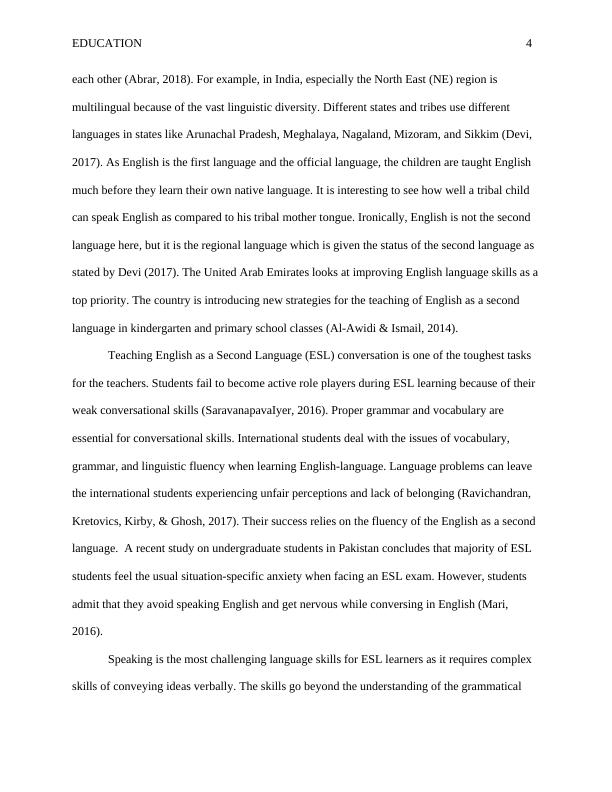Challenges Faced by English Language Learners and Teachers in ESL Classrooms
Write an essay about my personal experience of learning English as a second language.
14 Pages3546 Words249 Views
Added on 2023-06-08
About This Document
This article discusses the challenges faced by English Language Learners and Teachers in ESL classrooms. It highlights the problems areas in the field of ESL learning and teaching and suggests ways to improve the learning environment.
Challenges Faced by English Language Learners and Teachers in ESL Classrooms
Write an essay about my personal experience of learning English as a second language.
Added on 2023-06-08
ShareRelated Documents
End of preview
Want to access all the pages? Upload your documents or become a member.
This research will be to study the interventions for the challenges
|8
|1809
|25
Language Assessment: ESL/EFL Learners, Diagnosis, and Tasks
|13
|3713
|40
Childhood Education | Research Study
|11
|2427
|61
English Oral Speaking and Esl Learning in Hong Kong
|22
|6133
|22
Dissertation Assignment Solved
|4
|503
|92
Teacher Language Awareness | Assessment
|16
|4148
|19




